Diggin' In
The Richard Gienger Report
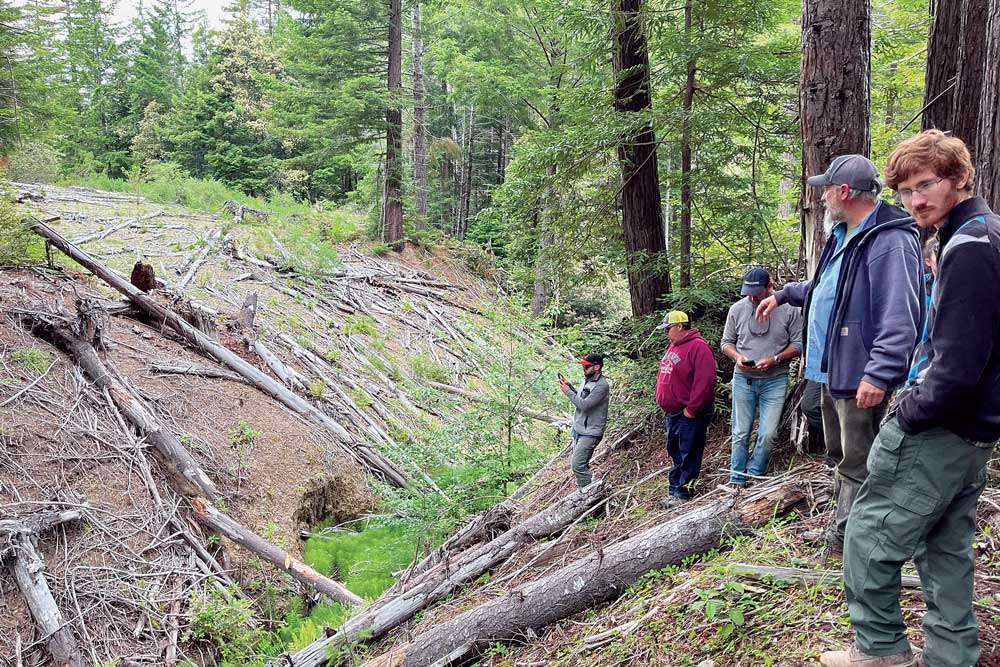
There’s been time for a lot to happen between the Spring 2023 edition of Forest and River News and this Fall/Winter 2023-24 issue. This column will be a little longer than usual, and I’ll have to dredge my memory and hope key issues are covered. All FRN contributors are being encouraged to emphasize instances/examples of “cooperation, collaboration, and communication” in this issue, which I will try to do with both the past example of the establishment of Sinkyone State Wilderness & InterTribal Sinkyone Wilderness and the current example of struggles for true generational stewardship and Land Back/Co-management. There’s a bunch in between, of course, and I can’t help but bring up the all-too-common context of “chaos, conflict, and circumstances,” the dire-type.
Saving the Sinkyone: From Chaos to Cooperation
The struggle over the Sinkyone Wilderness Coast has been a topic in many issues of Forest and River News, most recently in Spring 2023. Emerging out of the chaos, conflict, and circumstances of Georgia-Pacific’s (GP) attempt to liquidate all old-growth and merchantable trees starting in 1975—with the California Department of Forestry’s (CDF, now known as CAL FIRE) approval of timber harvest plans—was the Appeals Court ruling in 1985 (EPIC v. Johnson) and the acquisition of 7,800 coastal acres in 1986.
CDF approved an entry timber harvest plan (THP) in 1977 in what became known as the Sally Bell Grove watershed, constraining the obliteration to be conducted in stages instead of all at once. Every ounce of cooperation, collaboration, and communication was engaged in the fight to stop the logging of the Sally Bell Grove. Hundreds of people and multiple organizations had steadily advocated for years, in many venues, for protection for the whole affected coast—THP after THP—culminating in outrage over the THP to remove the old-growth grove with a 75-acre clearcut.
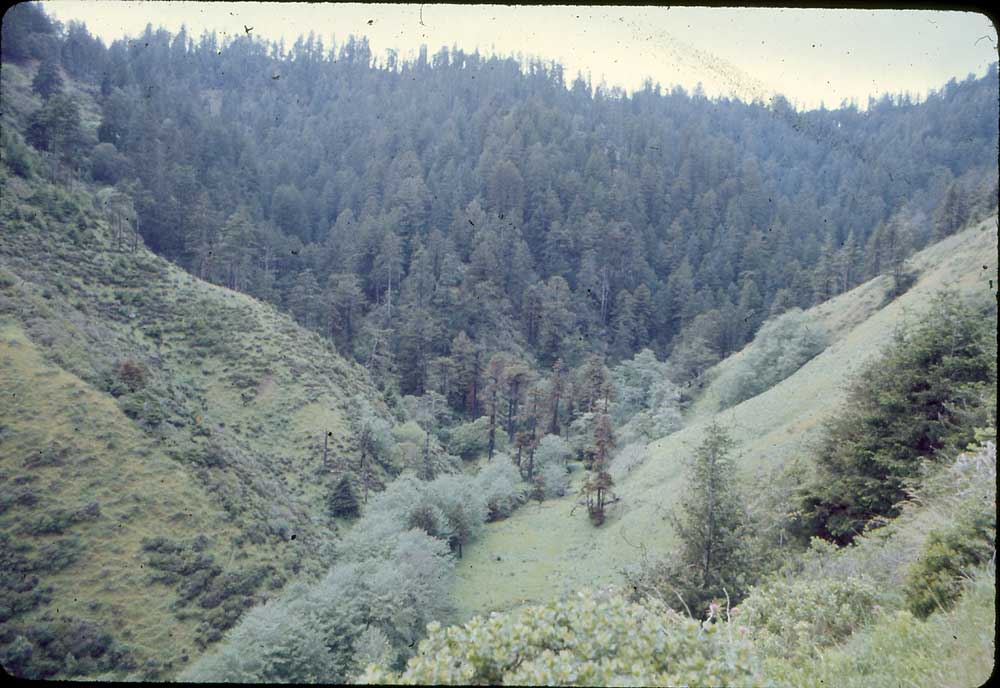
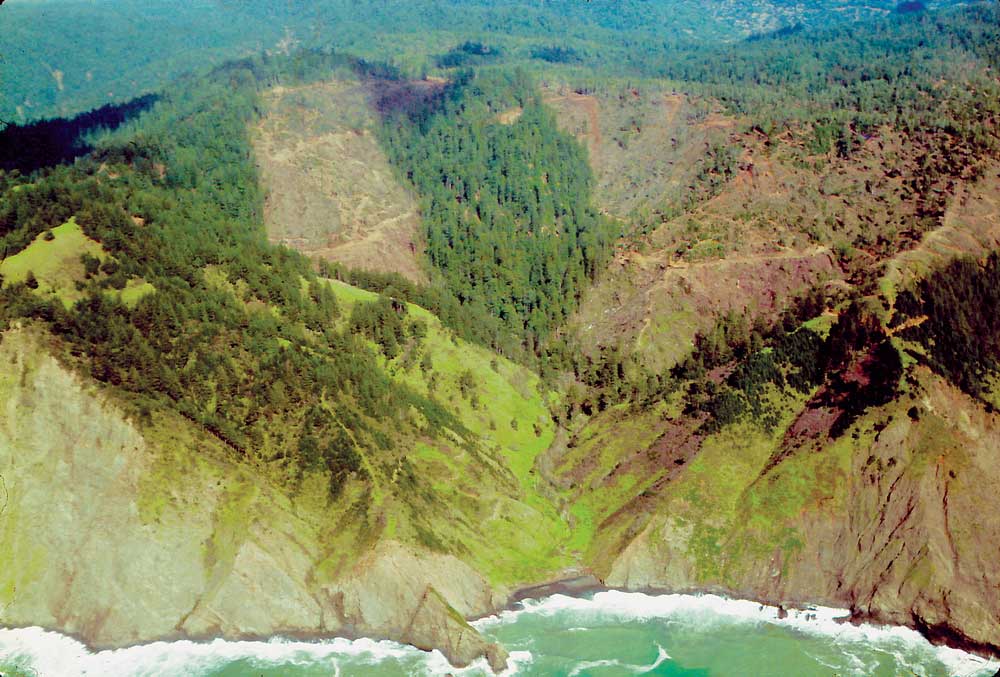
A strong lawsuit was filed in the Fall of 1983 against CDF/GP by the Environmental Protection Information Center (EPIC) and the International Indian Treaty Council. Non-violent civil defense of the Grove was repeated until the California Appeals Court granted a Stay on operations. The decision came in the summer of 1985: CDF was required to (and did not) consider cumulative impacts, adequately consult with California Indians and Tribes, adequately ensure that Native American Heritage was being protected, and follow public review process requirements. GP resubmitted the same plan with only the date changed. The second litigation commenced, but the Trust for Public Lands stepped in, and about 7,800 acres were acquired in December 1986 from Georgia-Pacific. Contention continued over partition of the acquisition into protected areas and “multiple mechanized uses.”
The InterTribal Sinkyone Wilderness Council was founded in the mid-1980s. With incredible perseverance and strong public support, this group eventually acquired over half of the 7,800 acres and established the InterTribal Sinkyone Wilderness. Most of the rest became part of the California Wilderness System, with two smaller areas becoming part of Sinkyone Wilderness State Park. Many players collaborated over the years to protect the forest and put the acreage in Native hands and the park system.
Now, here we are in the present, and I have a long list of issues, events, and history I aspire to cover; much will have to be very brief and some held over for my next column. I do want to make sure that there’s enough there to give substance and background to our condition and the need for an arduous but positive coming to grips individually and collectively in the present and the future.
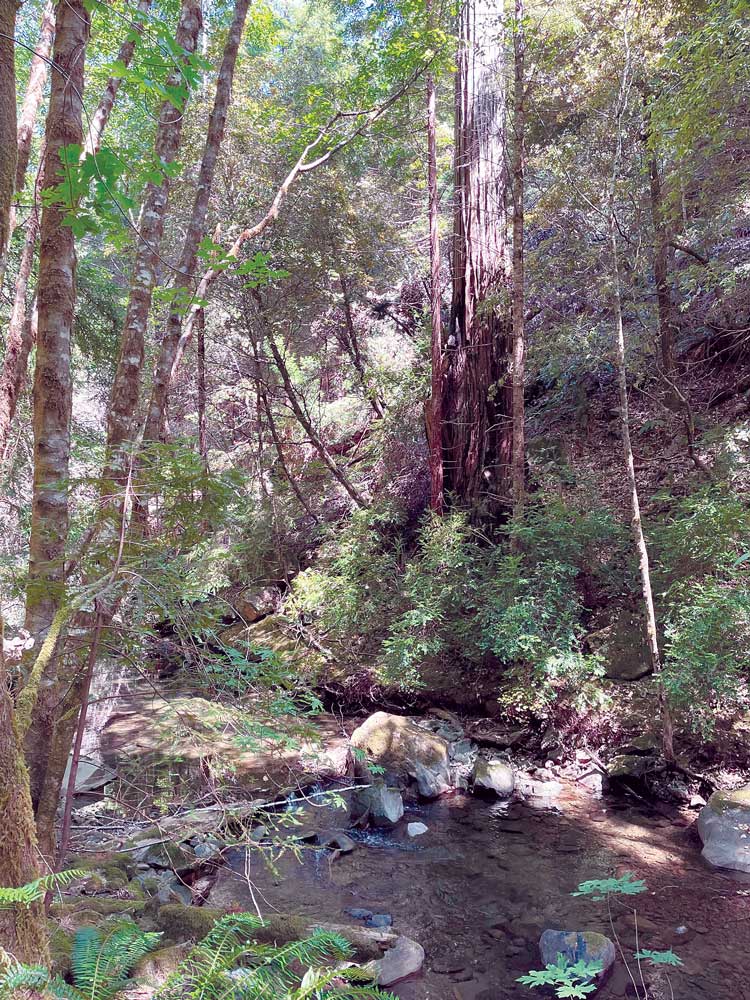
All photos this article by Alica Bales, unless noted
Jackson Demonstration State Forest
The process to make needed changes for Jackson Demonstration State Forest real have been a particular point of difficulty. These issues have been brought forward in the last couple of years from several perspectives in FRN and elsewhere. Both North Coast state legislators have called for an expedited new management plan with no new plans approved until the expedited plan is in place. CAL FIRE/Board of Forestry are clinging to a “New Vision” white paper to facilitate THP-by-THP approval rather than dealing with the whole Forest situation. They openly are denying consideration of environmental impact until the new plan is done, and the Board of Forestry says “okay” for that basic consideration. They want to turn over the redo to a consultant, without adequate public determination of the Scope of Work—bypassing a truly public process. CAL FIRE/BoF are claiming they are committed to “co-management” with the Tribes, including the formation of a Tribal Advisory Group while playing Tribes against one another and even refusing to respond directly to a letter from a Tribal representative for more than a year about reasonable process and protection for cultural heritage locations on a particularly critical approved THP. There is no process or standard for what co-management really means. Meanwhile, climate and forest experts, and their in-depth perspectives, are shunted aside. .
Maybe the best way to get some of these problems across is to share some quotes from the August 2023 letter of resignation as facilitator by Kim Rodrigues, who has had a long and distinguished career with UC Extension both as a scientist and skilled facilitator. As her letter shows, the situation of Jackson State Forest currently represents a failure to collaborate.
“I accepted the role as Facilitator for the JAG in November 2022 in order to establish a collaborative process to work through the past and ongoing conflicts related to management issues at JDSF. At that time and at my first JAG meeting in March, I stated I would remain facilitator if I was working well for Cal Fire, the JAG, and the public, and that the process had to be working well for me to remain in this role. I am unable to support a collaborative process due to the policy constraints imposed by the California Natural Resources Agency and the State Board of Forestry, combined with the timelines requested by CAL FIRE to review and implement new THPs.”
She goes on to say: “I was informed that the main purpose of the JAG and JDSF is to “keep THPs moving and achieve the non-THP goals.” The JAG will need to make decisions on the Camp 1 THP in September. As the first THP coming to the JAG since I joined this process, it is critical to establish a clear process for decision making in order to support or deny this request. “
And finally she concludes: “The JAG works on consensus, the highest form of collaboration, yet the process is not truly collaborative. Cal Fire announces the projects and timelines, seeks limited input with limited dialogue and makes decisions. I am willing to support a collaborative process if/when the State and CAL FIRE commit to such a process. And I sincerely hope the development of the new forest management plan is done in a collaborative manner.”
Traditional Ecological Knowledge
This fall, the start of a cultural burn happened in Southern Humboldt Community Park. It was the precursor of a broader burn in 2024. Local Wailakis, Native Health in Native Hands, and others are involved. A beautiful recording of the event can be heard here: https://share.transistor.fm/s/a801f669
This was one example of the growing presence and practice of TEK, Traditional Ecological Knowledge. You can search via the internet and find a lot of basic and inspiring information. This year’s Redwood Forest Foundation, Inc. (RFFI) virtual annual meeting featured Karuk skilled cultural fire practitioner Kathy Mccovey. www.rffi.org/2023-annual-meeting-recap/
Full disclosure: I am on the Board of RFFI with an abiding interest in forest and watershed recovery. As I write, a prescribed burn is underway on the ridge between Piercy and Standley Creeks in RFFI’s Usal Redwood Forest. Looks like good timing, hopefully dry enough before a week-long period of rain is expected.
A lot more prescribed and cultural fire is being planned for Usal Redwood Forest. Ideally it will be primarily cultural fire with Chinquapin Springs Tan Oak Grove and Duggan’s Opening being pilot examples. Recovery of productive prairies from drastic incursion by conifers is a goal in our whole region.
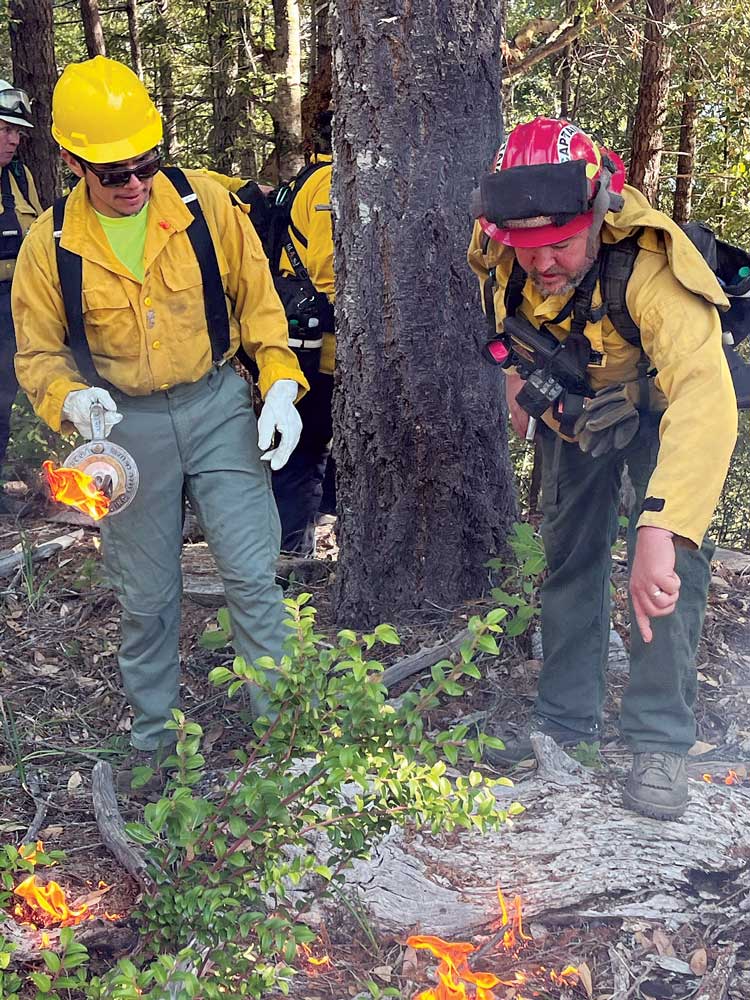
Wailaki Opposition to the Great Redwood Trail in the Mainstem Eel River Canyon
Another issue of immediate importance—which could remain so for decades—is the so-called Great Redwood Trail (GRT) that would extend from San Francisco to Humboldt Bay along the old railroad right-of-way, a.k.a. “rails to trails.” Some parts near urban-suburban areas are taking shape. The rail-trail along Humboldt Bay is a northerly example. Through the Eel River Canyon is another matter. The Eel River White Lily Clan of the Wailaki have a written Resolution to Oppose the GRT which states in part:
“The Great Redwood Trail poses a great threat to the Eel River Canyon Preserve, The Grand Canyon of the Eel River which has been designated as a National Wild and Scenic River, and an incalculable number of Native American, Sacred and Sensitive Sites; both documented and undocumented. Many of these sacred sites have already been desecrated by the general public, including irreplaceable ancient petroglyphs which are thousands of years old, which have documented impairment and degradation from recent and ongoing human vandalism.”
Of utmost importance to recognize and give thanks for is the removal of four dams from the Klamath River this year and in 2024, and related recovery efforts (see klamathrenewal.org.) There is perhaps no greater example of cooperation, collaboration, and communication over decades led by the Tribes in the Klamath Basin—an overdue response to gold, timber, fish, and green rushes as described by Kaitlin Reed in her new book Settler Cannabis.
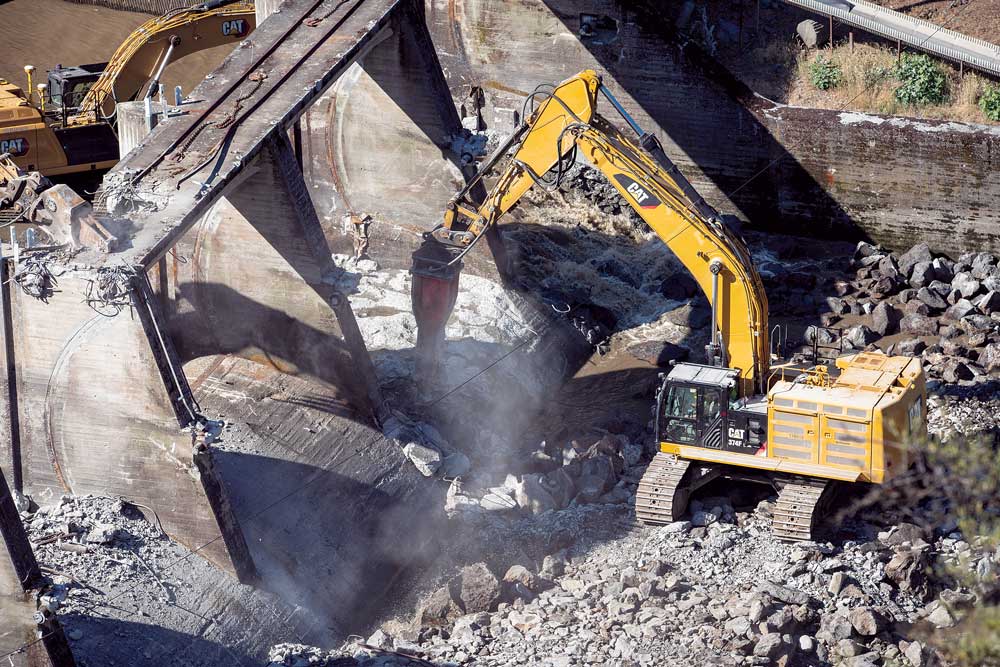
Photo by Shane Anderson of Swiftwater Films
Remembering Richard Wilson
Former California Department of Forestry Director Richard Alexander Wilson passed this year. Here’s a tribute I wrote. His life and perspective had incredible impact with immediate and future relevance.
Richard Wilson passed away in late summer 2023, shortly before his 90th birthday. The incredible scope of his life—the struggles and conflicts, losses and achievements, with his leadership, and the adversity he faced—is monumental. His interest and support extended into the visioning and reality of the Redwood Forest Foundation, Inc. and Usal Redwood Forest.
Richard was connected with California throughout his life, from the Southern California Coast to the forested mountains of the North, and places in between and beyond. There are incredible details and stories. There are hundreds of pages of transcribed interviews as well as recordings available through the Bancroft Library of UC Berkeley alone.
Richard was an integral part of the intense struggles over forestry in Mendocino County in the 1980s—and both before and after. Those struggles are a major part of the events that instigated, enabled, and inspired the founding of the Redwood Forest Foundation, Inc.
Richard was the head of the Forest Advisory Committee (FAC) formed by the Mendocino Board of Supervisors following a resolution to “guarantee that the county’s main resource (timber) will be managed so that its benefits will continue undiminished.” Turns out Richard, amazingly, was appointed to be the Director of Forestry, a position he held for 8 years during the terms of Governor Pete Wilson in the 1990s. Richard intensely suffered when the Board of Forestry denied Mendocino County its Rules. This was an action that went against the regulations that pertained to, and permitted, county-specific rules.
Richard’s time as the Director of the Department of Forestry was fraught with contention and compromises as he fought for conservation practices—between the daunting gauntlet of hardcore industry and earnest activists. He pressed for the report: A Scientific Basis For The Prediction Of Cumulative Watershed Effects by The University of California Committee on Cumulative Watershed Effects, published in June 2001. This is still a thorn in the side of CAL FIRE, which has never denied approval of a plan because of cumulative impacts. He brought an old friend, civil engineer Donald Gray, from University of Michigan, to examine the impacts of the New Year’s storms of 1996-97, particularly the torrent that swept through Stafford. The conclusion: “deranged hillslope hydrology” from the clearcut source. Richard later chose to go to court against Pacific Lumber/Maxxam for fraud in a “cooked books” invalid Sustained Yield Plan in 2006.
In the latter part of Stand for the Land (see Reading List for this and more), the efforts of Henry Gundling and RFFI are highlighted. Giles Mead helped RFFI get started and helped publish Stand for the Land. We were always happy to see Richard, often with Randy Vann, at RFFI’s annual meetings.
From the Epilogue of Stand for the Land, penned by Richard himself: “We must adopt a real conservation ethic and strategy to dismantle the disconnect between the ecosystem, as a natural order, and the overriding greed-driven human economic system, so that both our policy and practice is to engage our people to go back to working the land so that it produces on a sustainable basis, for both us and the wild animals, and our offspring—and theirs. . . . Redefining and reasserting a more enlightened public purpose and mission will not be quick or easy. But it must not be further postponed.”
Richard Wilson saw Redwood Forest Foundation, Inc. (RFFI) as a key part of that imperative.
Richard’s Recommended Reading
Please try to read as many of these as possible —a real help in getting on the same page. The following books and links give more insights and perspectives worthy of your time.
- I strongly recommend reading Settler Cannabis by Kaitlin Reed, especially her 24-page introduction.
- The Man Who Went Away by Harold Bell Wright, published in January 1, 1942, a novel set in the broader area and drama of Andersonia prior to WW II, with changed place names for locales from the South Fork Eel River to Bear Harbor.
- The River Stops Here: Saving Round Valley, A Pivotal Chapter in California’s Water Wars by Ted Simon.
- Stand for the Land: A Defining Duty of Richard A. Wilson by Tom Harris.
- Link for recent Jerry Rohde (I am told these books can be downloaded for free from Cal Poly Humboldt): https://www.amazon.com/Southern-Humboldt-Indians-Jerry-Rohde/dp/1947112791
- The Last Stand: The War Between Wall Street and Main Street over California’s Ancient Redwoods by David Harris.
- The Ghost Forest: Racists, Radicals, and Real Estate in the California Redwoods, June 6, 2023, By Greg King
- And, this article: https://www.yournec.org/expanding-redwood-national-park-in-1978-a-critical-act-to-save-the-park-from-virtual-obliteration/
Please help out where and when you can on all the issues before us. Check out the work of and other information for Sanctuary Forest, the Institute for Sustainable Forestry, EPIC, Forests Forever, Redwood Forest Foundation, Inc., and Save California Salmon.
To Get Involved
- •Richard Gienger, [email protected], 707/223-6474
- •EPIC, wildcalifornia.org
- • Institute for Sustainable Forestry, instituteforsustainableforestry.com
- • Forests Forever, www.forestsforever.org
- • Mendocino Trails Stewards, mendocinotrailstewards.org
- • Redwood Forest Foundation, Inc., www.rffi.org
- • Sanctuary Forest, sanctuaryforest.org
- • Save California Salmon, www.californiasalmon.org
- • Save Jackson Coalition, savejackson.org
